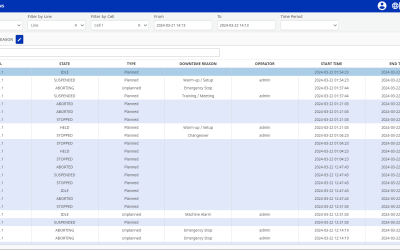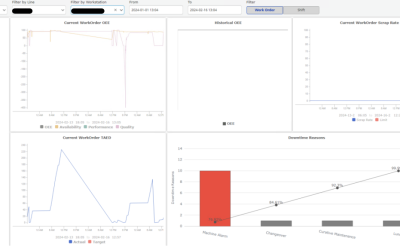Table of Contents
The client
Halsnæs Forsyning is the hero of today’s story.
“We make sure that waste from all households and holiday homes is collected and treated so that it has the least possible impact on the environment.”
Halsnæs Forsyning is owned by the Halsnæs Municipality in Denmark. The company serves tens of thousands of danish citizens, covering 4 different types of needs:
- Waste – the company collects and handles the citizens’ waste.
- Water – they supply drinking water to the citizens in the Halsnæs Municipality.
- Environmental-friendly wastewater treatment – “the primary goal is to divert wastewater to avoid infectious diseases and to transport and treat the wastewater to the least possible inconvenience to the environment.”
- Heat – they supply district heating for over 14,000 citizens.
It takes a lot of determination to start a digitalisation journey—automating processes and changing systems. Out of care for their customers, Halsnæs Forsyning decided to enhance their data collection and data access, specifically the rainfall data.
But they needed some help with the project first.
That’s where Ramboll comes in.
Ramboll is a global engineering, architecture, and consultancy company founded in Denmark in 1945.
“Across the world, Ramboll combines local experience with a global knowledge base to create sustainable cities and societies. We combine insights with the power to drive positive change to our clients, in the form of ideas that can be realised and implemented.”
Ramboll
Ramboll has been helping Halsnæs with their hydraulic sewer modeling for quite a while. In this case, Halsnæs tasked Ramboll’s team, led by Ida Bülow Gregersen, to take care of the project alongside Enuda, so the client can focus on what they do best while the solution is being built.
The challenge
Halsnæs has installed rain gauges throughout the area they cover.
To serve their customers the way they should, as well as to do hydraulic modeling, Halsnæs needed the data from those rain gauges in order to know:
- Where’s the rain falling?
- What’s the amount of rainfall?
- How fast does rain fall and collect on the ground?
The rain data is extremely important, as large quantities of rain can flood the sewers and cause problems within the system.
To prevent that from happening, or to be able to handle it successfully if it does, Halsnæs needed to be in the know regarding rainfall. Moreover, they needed data for sewer modeling (designs and analyses the gravity flow and pressure flow through sanitary sewer pipe networks and lift stations).
However, there’s a catch: in fact, they had plenty of data. But the problem was that accessing it was really difficult, time-consuming, and messy. The Ramboll team would have to clean up the data and make sense of it partly manually. Not super fun.
So, the goals were: get data from the system, make it easy and fast to access, analyse and present it in an understandable and useful format.
The solution
An overview
We named our solution The EnuData. It’s a hosted solution to analyse, visualise, and share information about the rain.
The EnuData gets the data from the client database, where their SCADA system stores it. The Ignition platform transfers the data regularly to our database, where it’s being stored and used for further analysis.
The solution provides different options to download the data as well as a quick way to visualise the rain information of each location on a map. Moreover, via email, monthly statistics and cloudburst notifications are sent.
The data

This is the raw data that comes from the rain gauges. The SCADA system stores it in the client’s database.
How do we get the data?
There’s a scheduled script that runs every hour. We used three name queries, selecting data from the client’s database, inserting it into Enuda’s database, and finally creating the depth data in Enuda’s database.
Database structure
There are 3 tables and 27 functions.
Transforming data into a desired format
The raw data comes from the client. Then, we create the depth data from the raw data on an hourly basis. Finally, we transform the data into data that can be later used for statistics and making conclusions.
The functionalities
This is the front-end of our solution (the main window).
The functionalities are divided into 3 sections.
“Select the tag names”
First, you have to select the tag names, as the tags have a name in the SCADA system. The “SRO_TAG” will give you the names of the tags as they appear in the SCADA system, but they’re not helpful because they couldn’t be easily understood by humans.
The names in the “RAMBOLL_TAG” one are the equivalent of the system names but are easier to read and understand for humans.
The tags are saved in the database with their system names, but to make the data more accessible to humans, we assign equivalent names in order to get the data out of the database with the human-readable names. However, when you want to download the data, you can do it in either system names or human-readable names.
“Data/time from” & “Date/time until”
Here, you select the period of time for which you want the data.
“Select the data type”
Halsnæs needed 3 main types of data:
- Accumulated = raw data as it comes into the system from the real world (from the rain gauges).
- Depth data = calculations in order to discover how much rain there was over a period of time.
- Statistics = the total amount of rain for each of the rain gauges over a period of time.
For each of these types of data, we have corrections.
The corrections are needed in the case of sensors/gauges being broken and giving wrong or odd data. Ramboll gave us a set of rules that we can compare the data against to see if the data needs corrections.
Lastly, a rainfall event is related to rain falling in a period/intervals of time.
A rainfall event is made out of different intervals of time in which it has rained. An event ends if 60 minutes have passed since the last rainfall has happened (intervals of rain and dry weather shorter than 60 minutes are all considered in the same rainfall event).
“Select meter”
You can choose one tag, all the tags, or whichever tags you want to download the data for.
The map
Halsnæs and Ramboll needed a quick way to have an overview of their rain gauges and the rainfall-related numbers for each of them in a chosen period of time.
That’s where the map comes in.
You can find the map component in Ignition’s Perspective module.
It’s a real map which means that you have the real-life coordinates of the rain gauges, you can Zoom In and Out, and move it around. To pull in the data from the database (the names in the Legend section, the rainfall data), we used named queries.
How it works: you choose your desired period of time, click “Search”, and you get a summary of the total amount of rain in that period of time for every location in which there’s a rain gauge.
The number next to a drop icon (the meaning of it can be found in the Legend) is the aforementioned summary.
We’ve created the numbers and the drops separately, so the map is a cool combination of Ignition and database work.
Moreover, you can see a red flag if there has been a cloudburst (heavy rainfall) in that period of time.
The email reports
The client wanted to have a report based on the data over a specific period of time, but they didn’t need the Reporting Module. They only wanted simple functionality.
We’ve created a script that uses named queries and the data to create a CSV file that can be sent automatically via email to those interested.
Using the built-in function in Ignition, called “Gateway Scheduled Events”, we created the functionality so the client can get:
- Monthly statistics reports (on the last day of the month at 23:59 PM)
- Cloudburst notification (every day at 7:00 AM)
- Meter error notification (every day at 7:00 AM)
The emails are sent automatically thanks to a built-in function in Ignition that allows for that.
In the email, you can find:
- A subject line that tells you exactly what this email is about,
- A quick overview of the data for each of the tags (i.e. the total amount of rain for that month) right in the body of the email,
- The CSV file with all the data needed.
The outcomes
For Halsnæs Forsyning, the most important thing was the easy access to data. Before, it would’ve taken a lot of time and effort to do it. Today, they can have the exact data they want, they know very quickly what’s going on, and they can use it to serve their customers as they should. Moreover, the data is available for everybody that needs it, at all times.
For Ramboll, the goal was to have the tedious, manual tasks taken off of their hands. Before, they had to collect and clean up the data partly manually in order to be able to use it, but it was messy and difficult. Today, those tasks have been automated and they get the data they need in an understandable, useful format.
If you were to recommend Enuda, what would you say?
My favourite feature was the Map. It makes the data clear to everyone.
Other than that, the collaboration with Enuda was very nice, straightforward, and flexible. It’s been fun and easy to work together, and their skills are just amazing. I’ve been doing the data gathering and cleaning work partly manually prior to the project, and they were fast to catch up, automate it, and add functionalities that make my life easier.
(Ramboll) Ida
I would recommend Enuda for the team’s technical capabilities. They immediately identified the problem, figured out how to get into the system and get data out of it, and built a solution that allows us to access the data and actually use it to meet our business goals.
(Halsnæs Forsyning) Andres


